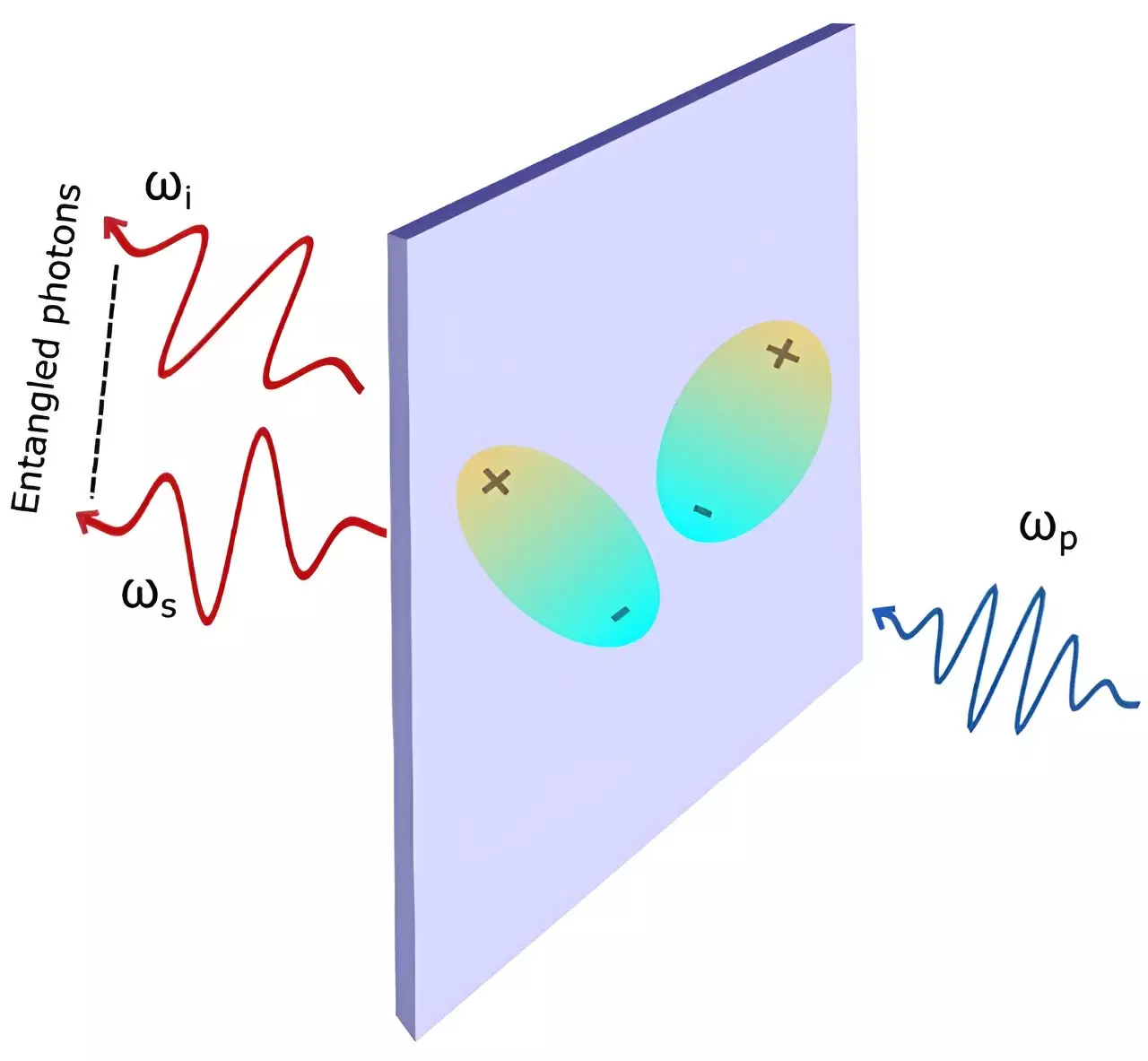Excitonic resonances have been a topic of interest for scientists from the National University of Singapore (NUS) who have uncovered their significant role in enhancing the efficiency of generating entangled photon pairs. This breakthrough could potentially lead to the development of efficient ultrathin quantum light sources, revolutionizing quantum technologies.
Associate Professor Su Ying Quek and her research team at the Department of Physics at NUS conducted a study on excitonic interactions in non-linear optical crystals, shedding light on how these interactions can amplify the efficiency of spontaneous parametric down-conversion (SPDC). By harnessing many-body excitonic interactions, the team observed a substantial increase in the efficiency of SPDC, particularly when the oppositely charged excitons are closer together in the crystal.
The study utilized fully quantum mechanical calculations to analyze the non-linear optical response of crystals to incident light, taking into account excitonic effects. Dr. Fengyuan Xuan, the lead author of the research, emphasized the importance of understanding the interactions between negative and positive charges in the crystal for optimizing SPDC efficiency. The team’s findings suggested that neglecting these interactions could lead to a significant decrease in efficiency compared to a more comprehensive approach.
Professor Quek highlighted the potential of using ultrathin crystals to address the phase matching problem associated with SPDC. While conventional wisdom suggested that the efficiency of ultrathin crystals decreased with material volume, the research team discovered that the stronger excitonic interactions in these crystals could actually improve efficiency. This opens up new possibilities for utilizing ultrathin crystals as sources for producing entangled photons.
Advancements in Quantum Technologies
By applying their theoretical approach to NbOI2, a layered non-linear optical material, the team was able to study both SPDC and second harmonic generation (SHG). They found that excitonic enhancement played a crucial role in boosting efficiency, especially when the frequency of the incident light closely matched an excitation frequency in the crystal. Furthermore, by aligning one of the entangled photons’ frequency with another excitation frequency in the crystal, SPDC efficiency could be further enhanced.
Future Implications
These groundbreaking discoveries pave the way for the use of ultrathin materials in generating entangled photons, which could facilitate their integration into hybrid quantum-photonic platforms for future devices. Professor Quek expressed optimism about the potential impact of this research on advancing quantum technologies and opening up new avenues for quantum communication and computing.
The research conducted by the team at NUS highlights the critical role of excitonic interactions in enhancing the efficiency of generating entangled photon pairs. By exploring the potential of ultrathin crystals and leveraging excitonic resonances, the team has made significant strides towards improving quantum light sources and advancing quantum technologies.


Leave a Reply